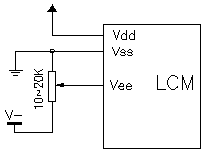LCD Question and Answer
1.Question:What types of LCD and LCD Module?
Answer:TN:Twisted Nematic
HTN:High Twisted Nematic
STN:Supper Twisted Nematic
FSTN:Formulated STN
TFT:Thin Film Transistor
COB:Chip On Board
COF:Chip On Film
COG:Chip On Glass
TAB:Tape Automated Bonding
2.Question:What is the LCD character?
Answer: LCD:Liquid crystal displays (LCDs) are a passive display technology. This means they do not emit light nor any radiation; instead,
they use the ambient light in the environment.
1. Operating temperature and storage temperature: Operating temperature 0℃~50℃,storage temperature -20℃~70℃
Wide range LCD operating temperature -30℃~80℃,storage temperature -40℃~100℃
2. Contrast:TN LCD:DUTY 1~1/8 Cr >5.
DUTY 1/8~1/16 (1/8 included),Cr >3.
STN LCD:Cr > 3 for blue and gray type. Cr〉5 for yellow, green, yellow and green type
3. Response time: TN LCD:Rising time < 250ms; Falling time < 300ms. STN LCD:Rising time<400ms; Falling time < 400ms.
4. Viewing angle:TN LCD:DUTY 1~1/8〉 30°; DUTY 1/8~1/16,> 25°. STN LCD:DUTY > 1/64,> 50°; DUTY < =1/64,> 30°.
5. Threshold Voltage:Minimum 0.7V for TN type under normal atmospheric temperature,
minimum 0.8V for STN type. Threshold voltage may rise if LCD has a wide range temperature.
3.Question:What is the Caution for Operation with LCD and LCD Module?
Answer:1.HANDLING PRECAUTION
1-1. MOUNTING METHOD
The panel of the LCD module consists of two thin glass plates with polarizers which easily get damaged since the module is fixed by
utilizing fitting holes in the printed circuit board. Extreme care should be taken when handling the LCD modules.
1-2. CAUTION OF LCD HANDLING & CLEANING
When cleaning the display surface. Use soft cloth with solvent (recommended as below) and wipe lightly.
-Isopropyl alcohol
-Ethyl alcohol
Do not wipe the display surface with dry or hard materials that will damage the polarizers surface.
Do not use the following solvents:
-Water
-Ketones solvents
-Aromatics solvents
1-3.CAUTION AGAINST STATIC CHARGE
The LCD modules use C-MOS LSI drivers. So we recommend that you connect any unused input terminal to Vdd or Vss,
Do not input any signals before power is turned on and ground your body,
Work/assembly table and assembly equipment to protect against static electricity.
1-4.PACKAGING
Modules use LCD elements,
Do not subject to excessive shocks by dropping the units.
-To prevent modules from degradation,
do not operate or store them in sunshine or at high temperature/humidity.
1-5.CAUTION FOR OPERATION
It is indispensable to drive LCM within the specified voltage limit since the higher voltage than the limit will shortens LCM life.
Response time will be extremely delayed at lower temperature than in the specified operating temperature range and on the other
hand at higher temperature LCD will show dark color in them.
However those phenomena do not mean malfunction or out of order
with LCD, which will come back in the specified operating temperature range.
If the display area is pushed hard during operation.
Some font will be abnormally displayed but it resumes normal condition once turning off
A slight dew depositing on terminals may
c
ause Electro-chemical reaction resulting in terminal open circuit. Under the maximum operating temperature, 50%RH or less is
required
1-6 STORAGE
In the case of storing for a long period of time (for instance, for years) for the purpose of replacement use, the following ways are
recommended
-Storage in a anti-static polyethylene bag with the opening sealed so as not to enter fresh air outside in it, and with
no desiccant. -Placing in a dark place where neither exposure to direct sunlight nor to light, keeping temperature in the specified
storage temperature range.
-Storing with no touch on polarizers surface by anything else. (it is recommended to store them as
they have been contained in the inner container ).
1-7.SAFETY
It is recommended to crash damaged or unnecessary LCD into pieces and wash off liquid crystal by using solvents such as acetone
and ethanol, which should be burned up later.
When any liquid crystal leaked out of a damaged glass cell comes in contact with your
hands, please wash it off immediately with soap and water.
2.PRECAUTION FOR USE
2-1. A limit sample should be provided by the both parties on the occasion when the both parties agree its necessity.
Judgment by
a limit sample shall take effect after the limit sample has been established and confirmed by the both parties.
2-2. On the following occasions, the handling of problem should be decided through discussion and agreement between
representative of the both parties
When a question is arisen in this specification.
When a new problem is arisen which is not
specified in this specifications.
When an inspection specification change or operating condition change in customer is reported to
Link-Sun and some problem is arisen in this specification due to the change.
When a new problem is arisen at the customer's
operating set for sample evaluation in the customer size.
4.Question:LCD Optical & Color Mode?
Answer:
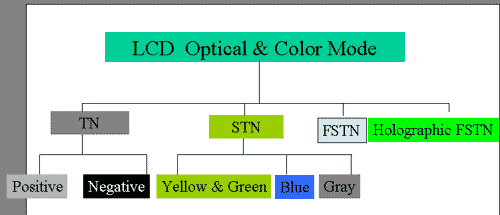
TN Type
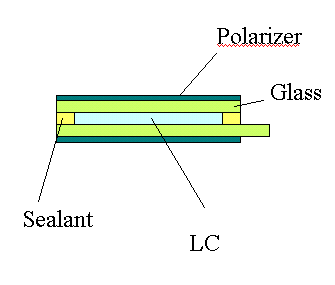
Positive display,black display with white background
Negative display, white display with black background
LC twist angle stays at 90o for TN LCD
STN Type
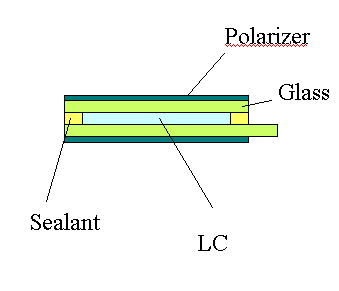
Yellow & green mode, blue black display with yellow & green background
Blue mode, white display with blue background
Gray mode, brown blue display with gray background
Because twist angle can stay at 180o~240ofor STN type,this type is applicable to higher drive
FSTN Type
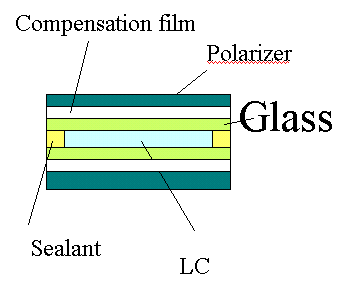
Positive and Negative display can be accomplished for FSTN type with multi-drives
Negative FSTN display,white character with black background
Positive FSTN type,black character with white background
FSTN is a type of display in which single or double compensation films are attached to STN LCD panel so that the interfering colors
can be compensated
Holographic FSTN
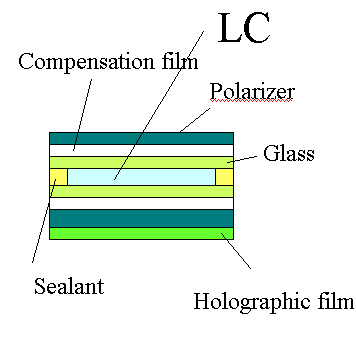
This is a type of LCD display in which a holographic film is attached to the FSTN LCD panel
With holographic film,bright background color pleasant to eyes will emerge
Answer:Rubber connector
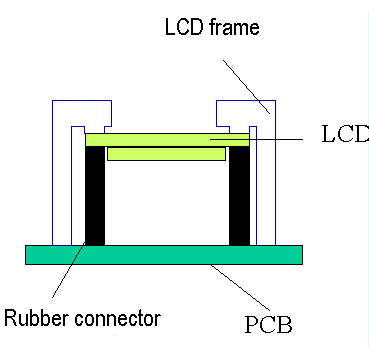
ompression-type connector where current flows between the LCD panel and the electronics of the printed circuit board through
a rubber connector
Since the pin pitch can be reduced,this connector is suitable for a large capacity LCD .
Pin connector
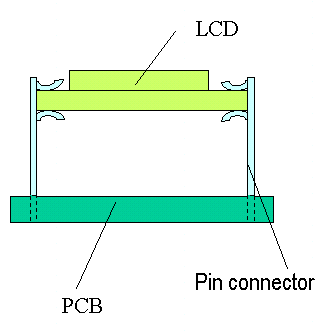
A connector soldered to the printed circuit board
The type of the pin: 2.54mm,2.0mm,1.8mm.
It can be used to such thick glasses:1.1mm,0.7mm,0.55mm
Heat seal connector
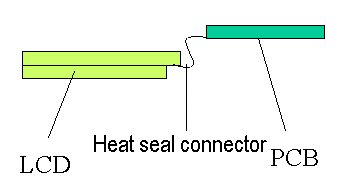
A connector where the LCD and the printed circuit board are connected using a heat crimping machine.(it is also possible
to solder them)
Since the connector has flexibility ,the LCD panel can be mounted easily.
TAB
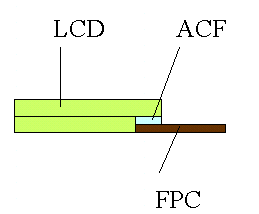
TAB is the abbreviation of Tape Automated Bonding.
A connector where the LCD and the IC are connected using a ACF
It can reduce the capacity of the LCM
COG
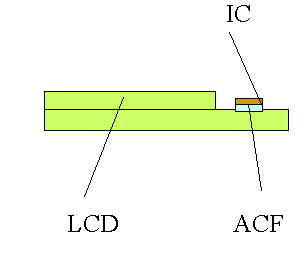
COG is the abbreviation of Chip On Glass
A connector where the LCD and the IC are connected using a ACF
It can reduce the capacity of the LCM
Answer: Interface with MPU
1.1 Character type LCM (Controller ks0066)
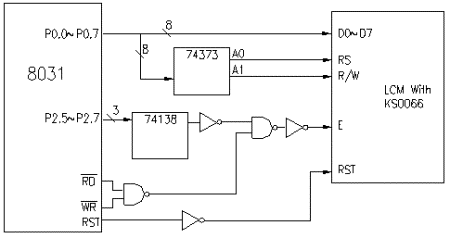
1.2 LCM using controller SED1520D0A(NJU6450)
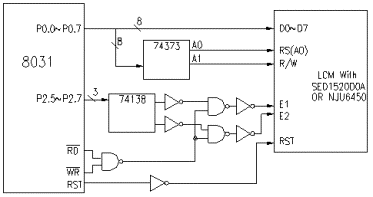
1.3 LCM using controller SED1520DAA(NJU6452
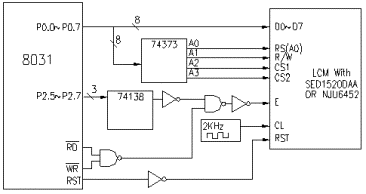
1.4 LCM using controller KS0108(HD61202)
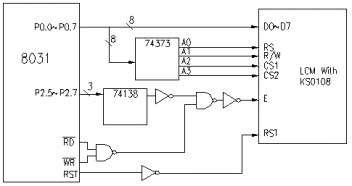
1.5 using controller T6963C
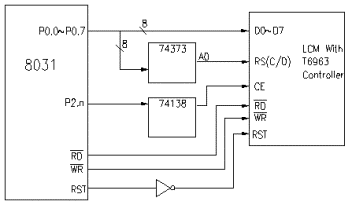
2 Power supply
2.1 Single power(Character type)
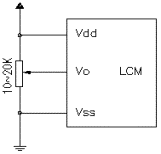
2.2 Dubble power(Character type and Graphic type)
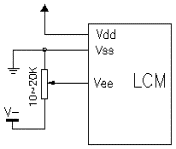
2.3 Dubble power (Graphic type)
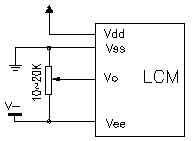
2.4 Single power (Graphic type)
